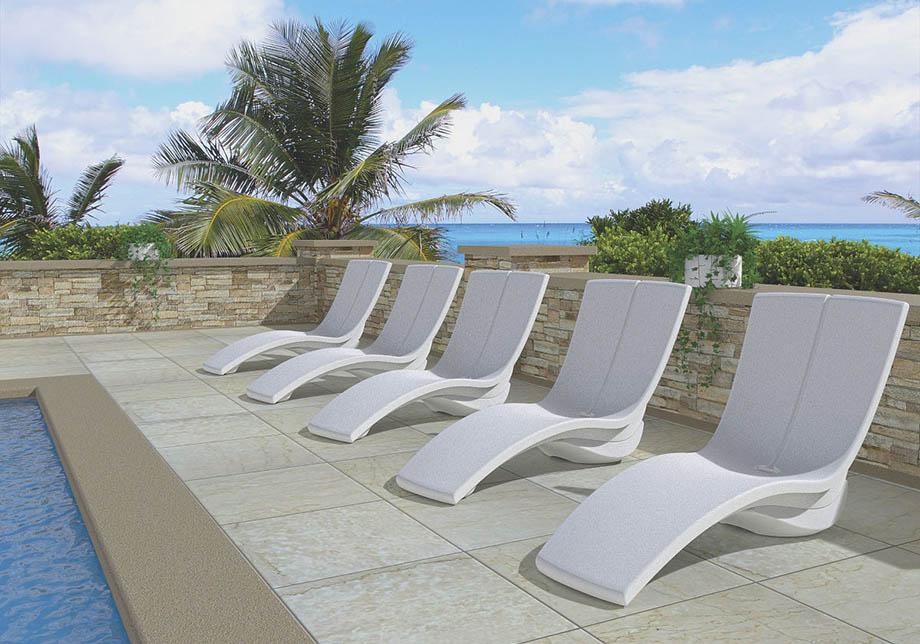80 vs 100 Tooth Miter Saw Blade

Choosing between an 80 tooth and 100 tooth miter saw blade may seem like a small decision, but it can make a big difference in the quality of your work. The number of teeth on the blade determines how smooth the cut will be. A higher number of teeth results in a smoother cut, while a lower number of teeth leaves a rougher edge.
So, what’s the difference between an 80 tooth and 100 tooth blade? Let’s take a closer look.
An 80 tooth blade is ideal for general purpose wood working. It can handle cross cuts, rip cuts, and even some heavy duty work. The downside is that it doesn’t produce as smooth of a finish as a 100 tooth blade.
A 100 tooth blade is designed for making precision cuts in thin material. It produces a very smooth finish, but it can’t handle heavier duty work like an 80 tooth blade can.
So, which one should you choose? It really depends on the type of work you’ll be doing. If you need a smooth finish, go with a 100 tooth blade. If you need to do some heavy duty cutting, go with an 80 tooth blade.
Key Takeaways:
- The right miter saw blade can improve the quality of your woodworking projects.
- 80 tooth and 100 tooth miter saw blades are popular for woodworking.
- The right tooth count depends on the type of project and desired finish quality.
- The 80 tooth blade offers versatility while the 100 tooth blade delivers the cleanest cuts.
- Consider the material and type of project when selecting a miter saw blade.
What is a Miter Saw Blade?
A miter saw blade is a circular, toothed blade specifically designed for use with a miter saw. It is an essential tool in woodworking that allows for precise and accurate cuts on various materials, including wood, plastic, and metal.
The blade’s teeth come in different sizes and shapes, allowing for specific cuts depending on the type of material and the desired finish quality. The blade’s diameter also varies, and it is important to ensure that the blade selected matches the size of the miter saw.
Using the right miter saw blade is crucial in achieving the desired results for your woodworking projects. It ensures that the material is cut cleanly and accurately without causing any damage, tear-out, or splinters. Moreover, it enhances safety by reducing the risks of accidents that may occur when using the wrong blade.
Therefore, it is vital to select the appropriate miter saw blade for your project to ensure that your woodworking endeavors are successful and without any issues.
Understanding Tooth Count
When it comes to miter saw blades, the tooth count plays a crucial role in determining the quality of the cut. The number of teeth present on the blade directly affects the smoothness and precision of the cut.
A higher tooth count on a miter saw blade generally indicates a smoother and more precise cut, which is ideal for delicate woodworking projects that require precise cuts. On the other hand, a lower tooth count on a miter saw blade is better suited for rough cuts and faster material removal, making it suitable for general carpentry and construction work.
When choosing between an 80 and 100 tooth miter saw blade, it’s essential to consider the materials you’ll be working with and the desired finish quality. The higher the tooth count, the smoother the finish, but it also results in slower cutting times. Conversely, a lower tooth count provides faster cutting times, but the finish quality may not be as smooth and precise.
Advantages of an 80 Tooth Miter Saw Blade
When it comes to woodworking, selecting the right cutting tool is a critical decision that can significantly impact the quality of your finished products. The 80 tooth miter saw blade is a popular choice among woodworkers due to its versatile nature and ability to deliver a balance between cutting speed and finish quality.
One advantage of the 80 tooth miter saw blade is its precision cutting ability. The smaller tooth size allows for faster cutting without compromising on accuracy, and this feature makes it ideal for creating detailed shapes and designs in a wide range of materials.
Furthermore, the 80 tooth miter saw blade is suitable for a range of woodworking applications and materials, making it a versatile choice for both novice and experienced woodworkers. Whether you are cutting hardwood, softwood, or other materials, the 80 tooth blade can handle it with ease.
Another significant advantage of the 80 tooth miter saw blade is that it delivers a consistently smooth finish. This feature is particularly useful when dealing with delicate or intricate woodworking projects, as it ensures high-quality results every time.
Overall, the 80 tooth miter saw blade is a great option for those looking for a versatile cutting tool for a wide range of woodworking projects. Its ability to balance cutting speed and finish quality makes it an excellent choice for both novice and experienced woodworkers alike.
Advantages of a 100 Tooth Miter Saw Blade
If you’re looking for the cleanest cuts with minimal tear-out, then the 100 tooth miter saw blade is your best bet for delicate woodworking projects. This blade is designed with a higher tooth count and smaller tooth size, allowing for smoother and more precise cuts on a variety of materials.
With its precise cutting ability, the 100 tooth blade is ideal for fine woodworking projects such as cabinetry, molding, and other intricate designs that require a smooth and polished finish. This blade is a perfect choice for cutting hardwoods, softwoods, and even laminates with ease and accuracy.
When using a 100 tooth miter saw blade, you’ll notice a significant reduction in tear-out and splintering, giving you a seamless and clean finish on your workpiece. Additionally, this blade can handle larger and thicker materials with ease as it has a smaller kerf, allowing for greater material yield.
In conclusion, the 100 tooth miter saw blade is a reliable and efficient tool that guarantees precision, accuracy, and clean cuts. When selecting a miter saw blade, consider the specific needs of your woodworking projects to determine whether this blade size is the right fit for you.
Factors to Consider when Choosing Between 80 and 100 Tooth Miter Saw Blades
Choosing the right miter saw blade is crucial to achieving the desired finish quality for your woodworking projects. When deciding between an 80 tooth and 100 tooth miter saw blade, there are several factors to consider:
- The type of woodworking projects you usually undertake
- The materials you work with
- Your desired finish quality
Each tooth count has its strengths and weaknesses, so it’s important to choose the one that aligns with your specific needs. Below, we’ll explore the advantages of each blade type to help you make an informed decision.
Common Applications for 80 Tooth Miter Saw Blades
When it comes to woodworking projects, versatility is key. One blade that offers just that is the 80 tooth miter saw blade. With a balanced combination of speed and precision, it is a popular choice among woodworkers for various applications.
Here are some common uses for an 80 tooth miter saw blade:
- General carpentry
- Furniture making
- Trim work
The smaller tooth size of the 80 tooth blade allows for faster cutting without sacrificing precision. This makes it suitable for a range of cuts, from rough to finish. Moreover, it is a popular choice for DIY projects due to its affordability and ease of use.
In summary, an 80 tooth miter saw blade is a reliable and versatile tool for various woodworking projects. If you are a beginner, or if you work on a variety of woodworking applications, this blade is a great option to consider.
Common Applications for 100 Tooth Miter Saw Blades
For woodworkers who demand the highest level of precision and a flawless finish for their projects, the 100 tooth miter saw blade is the go-to choice. With its smaller tooth size and higher tooth count, this blade cuts through wood smoothly and cleanly, leaving no tear-outs or rough edges behind. Here are some of the common applications for a 100 tooth miter saw blade:
- Fine Woodworking: When creating intricate designs or patterns in wood, the 100 tooth blade ensures a level of accuracy and detail that other blades simply can’t match. It is also ideal for shaping and carving wood with complex curves and angles.
- Cabinetry: In cabinetry work, the 100 tooth blade is used to make precise cuts on plywood, particleboard, and solid wood panels. The clean edges and smooth finishes of the blade are essential for producing high-end cabinets that demand expert craftsmanship.
- Molding: When creating trim or molding pieces, the 100 tooth blade ensures that the design is sharp, exact, and consistent. This blade is also useful for cutting intricate and difficult angles, which can be challenging with a less precise blade.
Overall, if your woodworking projects require the highest level of precision and a clean, professional finish, a 100 tooth miter saw blade is definitely the blade for you. Consider investing in this blade if you are working on high-end furniture pieces, delicate woodwork, or intricate design projects.
Conclusion
After comparing the 80 tooth and 100 tooth miter saw blades, I have come to the conclusion that both have their strengths and weaknesses. The 80 tooth blade is versatile and strikes a balance between speed and precision, making it suitable for a wide range of woodworking applications such as general carpentry, furniture making, and trim work. On the other hand, the 100 tooth blade is ideal for fine woodworking, cabinetry, and molding projects that require the cleanest cuts and a high level of precision.
When selecting a miter saw blade, it’s essential to consider your specific project needs and desired results. If you need to make rough cuts quickly, an 80 tooth blade may be the best choice for you. However, if your project calls for the highest level of precision, a 100 tooth blade will be the better option.
In summary, whether you choose an 80 or 100 tooth miter saw blade, what matters most is selecting one that aligns with your project requirements and produces the desired results. So, take your time and choose wisely between the 80 vs 100 tooth miter saw blade.
FAQ
What are the differences between an 80 tooth and 100 tooth miter saw blade?
The main difference between an 80 tooth and 100 tooth miter saw blade lies in the number of teeth. The 80 tooth blade is known for its versatility, allowing for faster cutting without compromising on precision. On the other hand, the 100 tooth blade is ideal for achieving the cleanest cuts with minimal tear-out, making it suitable for delicate woodworking projects that require a high level of precision and a smooth finish.
What is a miter saw blade?
A miter saw blade is a circular saw blade specifically designed for use with a miter saw. It is a crucial component of the miter saw and plays a significant role in achieving accurate and precise cuts in woodworking. The blade’s tooth count, size, and type will determine the speed, finish quality, and suitability for specific woodworking applications.
How does the tooth count affect a miter saw blade?
The tooth count on a miter saw blade refers to the number of teeth present on the blade. A higher tooth count generally indicates a smoother and more precise cut, while a lower tooth count is better suited for rough cuts and faster material removal. The tooth count affects the cutting speed and the finish quality, allowing woodworkers to choose a blade that best meets their project requirements.
What are the advantages of using an 80 tooth miter saw blade?
An 80 tooth miter saw blade offers versatility and a balance between cutting speed and finish quality. Its smaller tooth size allows for faster cutting without compromising on precision. This makes it suitable for a wide range of woodworking applications, including general carpentry, furniture making, and trim work.
What are the advantages of using a 100 tooth miter saw blade?
A 100 tooth miter saw blade provides the cleanest cuts with minimal tear-out, making it ideal for delicate woodworking projects that require a high level of precision and a smooth finish. Its smaller tooth size and higher tooth count ensure cleaner cuts on various materials. This blade is commonly used for fine woodworking, cabinetry, and molding projects.
What factors should I consider when choosing between an 80 tooth and 100 tooth miter saw blade?
When deciding between an 80 tooth and 100 tooth miter saw blade, consider the type of woodworking projects you usually undertake, the materials you work with, and your desired finish quality. Each tooth count has its strengths and weaknesses, so it’s important to choose the one that aligns with your specific needs and project requirements.
What are the common applications for an 80 tooth miter saw blade?
An 80 tooth miter saw blade is versatile and suitable for various woodworking applications. It is commonly used in general carpentry, furniture making, and trim work. The blade’s balance between cutting speed and precision makes it a popular choice among woodworkers for a wide range of projects.
What are the common applications for a 100 tooth miter saw blade?
A 100 tooth miter saw blade excels in applications that require the cleanest cuts and a high level of precision. It is commonly used for fine woodworking, cabinetry, and molding projects where maintaining the integrity of the material and achieving a smooth finish are paramount.
How do I choose between an 80 tooth and 100 tooth miter saw blade?
To choose between an 80 tooth and 100 tooth miter saw blade, consider the type of woodworking projects you usually undertake, the materials you work with, and your desired finish quality. Evaluate the specific requirements of your projects and select the blade that aligns with those needs to achieve the best results.
What is the conclusion when comparing an 80 tooth and 100 tooth miter saw blade?
In conclusion, the choice between an 80 tooth and 100 tooth miter saw blade depends on the specific requirements of your woodworking projects. The 80 tooth blade offers versatility and a balance between speed and precision, while the 100 tooth blade ensures the cleanest cuts and smoothest finishes. Consider your project needs and desired results to select the most suitable miter saw blade for your woodworking endeavors.





